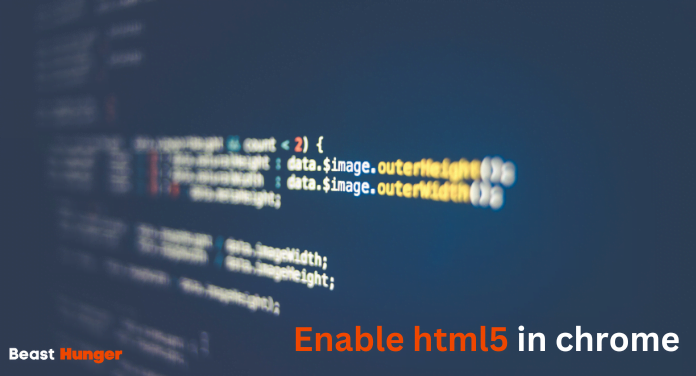Enabling HTML5 in Google Chrome for Better Performance
Do you want to ensure the latest web technologies power your browsing experience? HTML5 has become the new web standard, superseding older HTML4 code and adding advanced graphics, multimedia, and speed capabilities. By making sure Google Chrome has HTML5 fully enabled, you can boost performance and use the web’s modern features.
What is HTML5? How do i enable html5 in chrome?
HTML5 represents the most recent evolution in the core coding behind web browsers and pages. Web developers now rely on HTML5 instead of HTML4 and other markup languages like Flash or Java to create experiences that leverage the full capabilities of browsers like Chrome.
You May Also Like: Get Rid Of The Boxes On Google Chrome
Key HTML5 upgrades include:
- Hardware Acceleration: Smoother graphics and animations rendered on GPUs instead of just CPUs
- Native Multimedia Embedding: Streaming audio/video without additional plugins
- Canvas and Vector Graphics: More responsive 2D and 3D imagery options
- Offline Functionality: Browser-based apps that work without connectivity
- Cross-Platform Support: Consistent experience on different devices/operating systems
By enabling HTML5 integrations with Chrome, you unlock access to all these next-generation features web developers provide.
Checking Your HTML5 Settings
Before adjusting HTML5 settings, it helps to check their current status in Chrome. To view your configuration:
- Click the 3-Dot Menu > Settings
- Scroll down to the Privacy and Security section
- Expand the Site Settings area and select JavaScript
- Look for the Allowed section to see current HTML5 status
By default, most Chrome installations should have open access already granted to HTML5 features. However, settings can sometimes get changed, which blocks usage.
if access looks limited, you can edit permissions to get full modern web benefits.
Granting Full HTML5 Access
To guarantee Chrome leverages HTML5 whenever available for pages you visit:
- From Settings, choose Site Settings > JavaScript
- Under Allow, select “Allow All Sites to Run JavaScript”
- Scroll further down the JavaScript options
- Ensure options like WebAssembly and WebGL are also enabled
These open permissions let Chrome automatically utilize HTML5 APIs and capabilities used in page development. Double check by searching for a test site like html5test.com, which checks feature support. Test results should now show robust HTML5 capabilities.
Enforcing HTML5 Over Flash
Previously, Chrome relied on browser plugins like Adobe Flash to power multimedia. But modern HTML5 standards now replace those proprietary plug-ins with built-in native support.
Make sure Chrome prioritizes HTML5 over outdated dependencies like Flash:
- From Settings, choose Site Settings
- Select Flash > Let Sites Decide
- Uncheck the box for “Always Allow Flash” content
Now Chrome gives preference to HTML5 for video, audio, graphics and other browser needs rather than falling back to Flash. Websites using current development standards activate advanced HTML5-driven interfaces.
Updating for Future Standards
The web evolves rapidly, and standards like HTML5 continually improve. Make sure your Chrome browser stays on the cutting edge by:
- Turning on automatic Google Chrome updates
- Monitoring Chrome release notes for new capabilities
- Testing browser benchmarks like Octane 2.0 for performance gains
Proactive updating ensures you run the most optimized Chrome build using mature, efficient HTML5 support for faster browsing. Outdated Chrome editions may attempt outdated plug-ins before enabling HTML5. Staying current guarantees HTML5 powers your web experiences.
Unlock Modern Web Experiences with HTML5
The HTML5 takeover is complete across mainstream website development. Make sure your Google Chrome browser keeps pace by granting full HTML5 permissions, disabling legacy platforms like Flash, and staying updated with the latest builds. Follow these simple housekeeping strategies to enjoy blazing fast speeds, rich graphics and media. And the future-focused functions on the web. With full HTML5 enablement, Chrome delivers vastly expanded technical capabilities websites now offer. If you still have question on How do i enable html5 in chrome? feel free to contact us.






